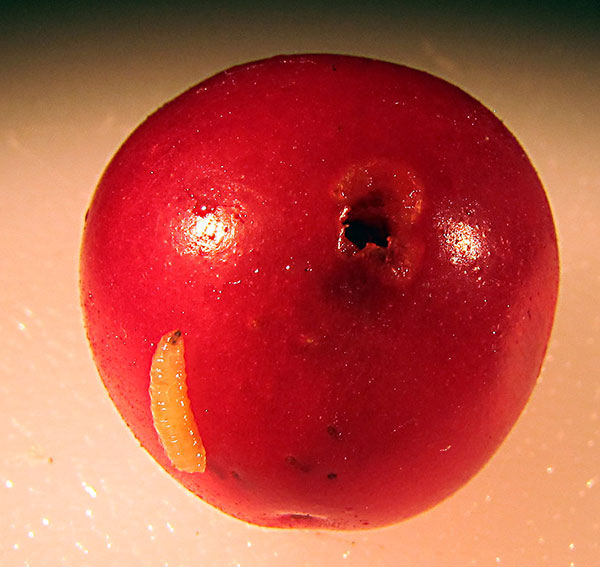Western Cherry Fruit Fly
HOSTS
- Sweet cherry
- Tart cherry
- Wild species of cherries
DESCRIPTION
Adult western cherry fruit flies (Rhagoletis indifferens) will migrate only short distances (< 40 m) if host fruit is available. This causes infestations to be spotty in a region; however, once established in an orchard, the western cherry fruit fly can spread rapidly and require annual control. Protective insecticide sprays are currently the major tactic for preventing infestation. An “attract-and-kill” technology where adult flies are enticed to feed on a sticky bait droplet containing an ultra low concentration of insecticide, has proven effective in Utah orchards.
BIOLOGY
Western cherry fruit fly overwinters as larvae inside the soil, and emerge as adult flies in May to early June, depending on soil temperature. Adults lay eggs beneath the skin of fruit without leaving visible marks, and the newly hatched larvae feed in the fruit.
SYMPTOMS
- Exit holes in the fruit
GENERAL MANAGEMENT
Monitoring:
Watch for adults May to mid-July
Insecticides:
- Residential: Spinosad, Carbaryl, Malathion, Esfenvalerate, Permethrin
- Commercial: Click Here



